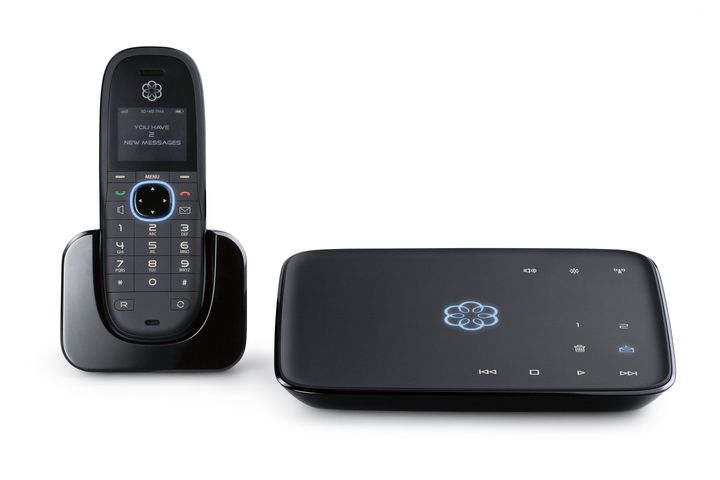
Call me old fashioned, but when I'm home or at an office, I like making and receiving phone calls from something that resembles a regular desk phone. One thing I like about desk phones is that they're tethered to the wall with a cord, so I'm less likely to misplace them. Another thing is that you don't have to worry about the battery running down. And, for the most part, the call quality is better on a regular old phone than on a cell phone.
Of course, there are all sorts of services that let you make free or cheap calls from PCs, tablets and other mobile devices, but as great as services like Sykpe and Gmail voice are, there is still a lot to be said for being able to pick up a regular phone. The trouble with regular phone service is that it costs a lot if you get it from one of those legacy phone companies like AT&T or Verizon. Not only do you pay a monthly service charge but -- unless you have a special plan -- you could wind up paying quite a bit for long distance or even when calling nearby communities.
Vonage -- at about $25 a month for unlimited U.S. calling and free calls to many European countries -- is a better deal than most regular phone company plans, but the cost of the service still adds up.
Ooma has a different pricing strategy. You don't have to pay monthly fees for the basic service (you do pay some taxes) but you have to buy the equipment starting at about $250 (you can find it for less) and once you own the Ooma router, you are free to use it. Once you own the handset, all you pay are taxes, which average about $3.50 a month. Long distance calls within the U.S. are free. Overseas rates vary by country but start at two cents a minute to call landlines in many countries. Calls to cell phones overseas are higher because -- in most countries outside of North America -- the caller pays the "air time."
New wireless adapter

Arrow points to optional Wi-Fi antenna (Photo credit: Ooma)
To use Ooma, you need a special box (called the Telo) which connects to your home network. Until recently it required that it be plugged directly into your router or cable or DSL-modem but now you can purchase an optional ($49.95) Wi-Fi adapter and put the Telo anywhere in the house.
Easy setup and good quality
Setup was reasonably straightforward. You have to temporarily connect the Telo adapter to a PC or Mac to enter in Wi-Fi network details, but once that's done you can put it anywhere within range of your Wi-Fi signal. I put the adapter and the wireless handset in my kitchen (several rooms away from the Wi-Fi router) and the sound quality is excellent. I also plugged in a standard corded phone, which also works well. As with any Internet connected device, sound quality will vary depending on bandwidth, and if your Internet or power goes down, so does your phone service. That's why it's a good idea to have your Internet router, cable or DSL modem and Ooma adapter on a battery backup system or Uninterruptable Power Supply (UPS).
Ooma also offers wireless handsets and a free Bluetooth adapter that allows you to use a Bluetooth headset or use your Ooma handset to answer calls on your cell phone as long as you're in Bluetooth range.
Premium plan
The company does offer a premium plan for $9.99 a month that includes free number porting, a free second line, three-way calling, multi-ring (so you can have your cell phone, work phone and other phones ring when people call your Ooma number) and -- my favorite -- Google Voice extensions. With Google Voice extensions you can integrate your Ooma phone with Google Voice so people see your Google Voice number on their caller-ID when receiving a call from your Ooma phone.
To hear how Ooma sounds, listen to my Podcast with its CEO

Ooma CEO Eric Strang (Photo credit: Ooma)
To demonstrate how Ooma sounds, I used my Ooma line to call Ooma CEO Eric Stang who, of course, was also using an Ooma phone. My voice is recorded directly into a microphone (bypassing the phone system) but his was coming through the Ooma phone line.
Listen here at CNET News.com
This article also appears on LarrysWorld.com.